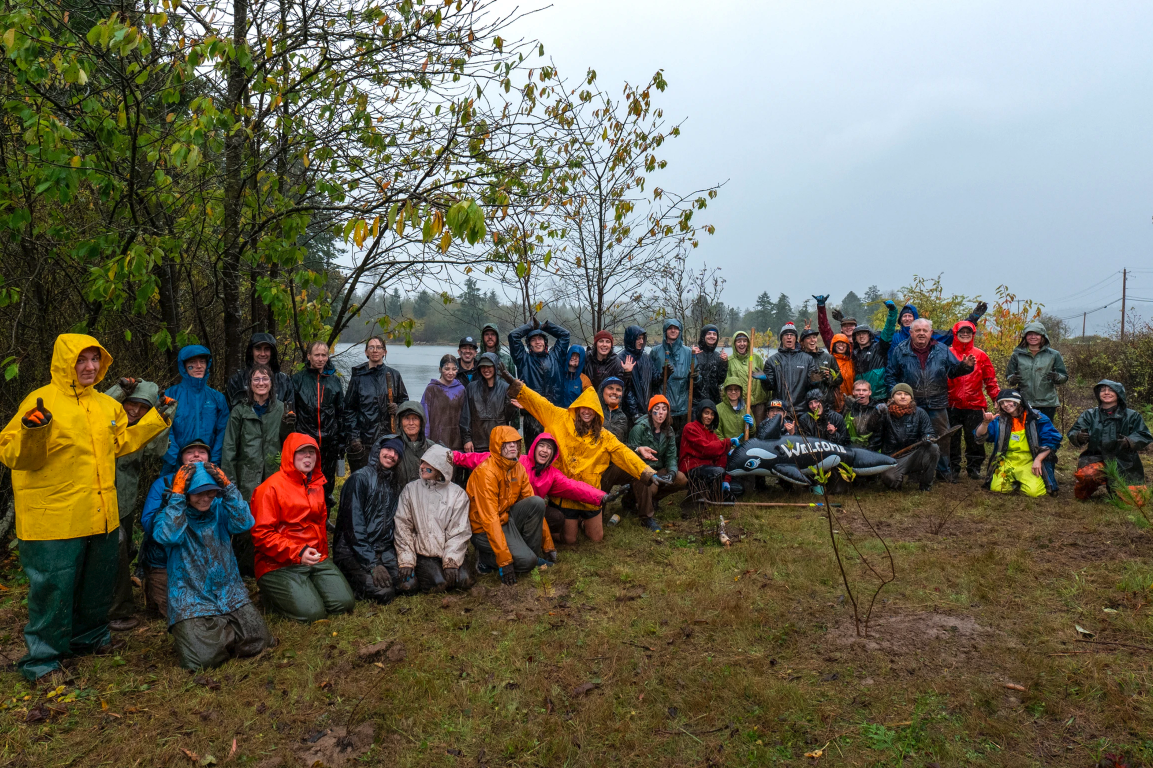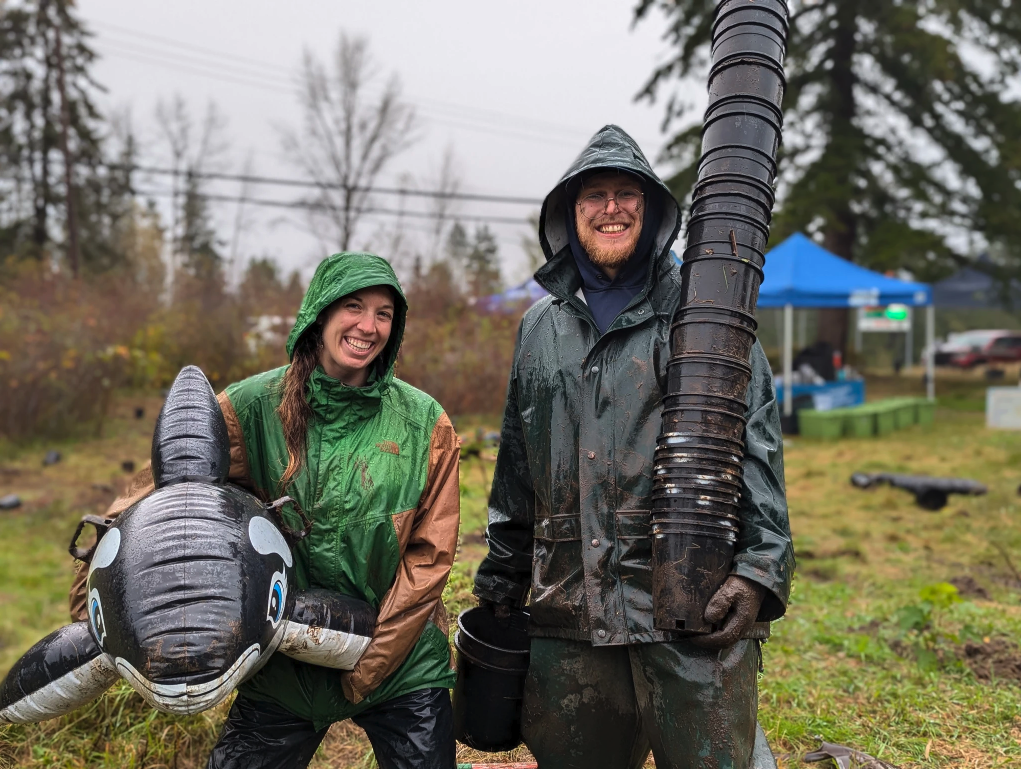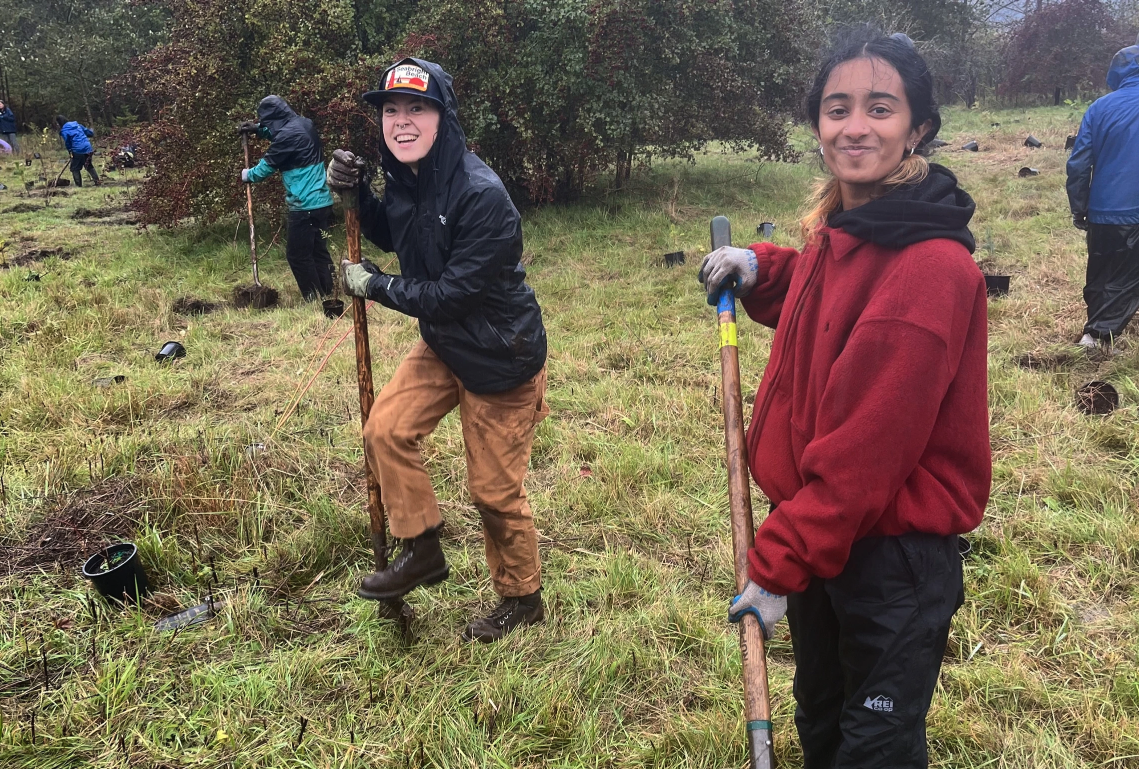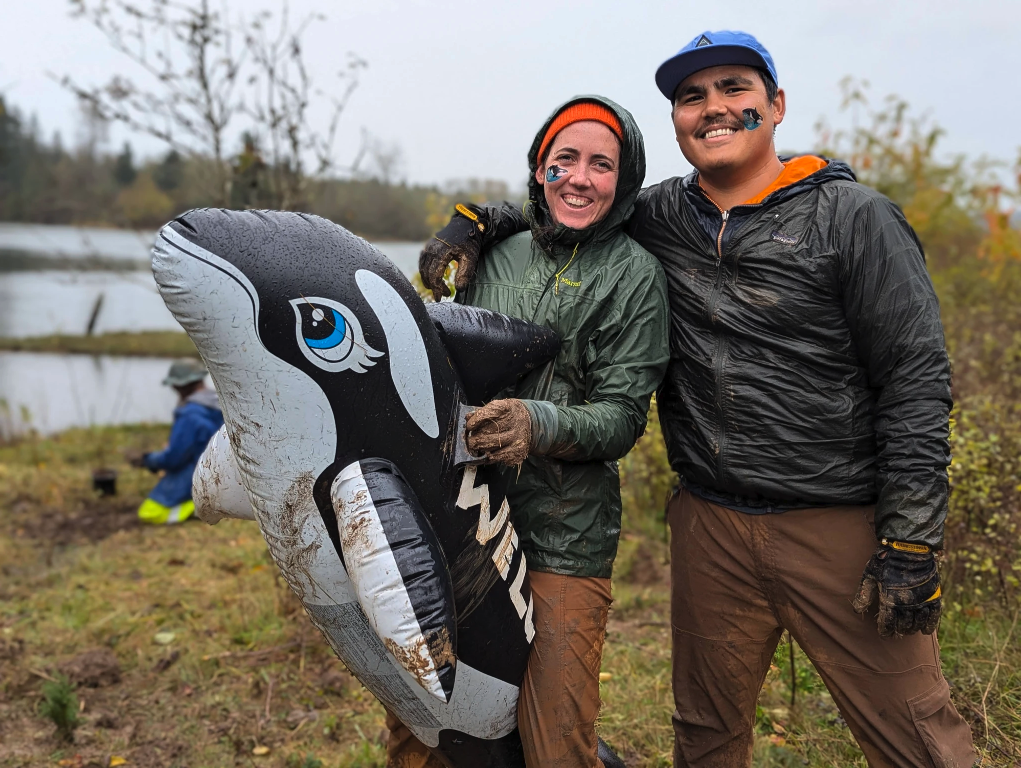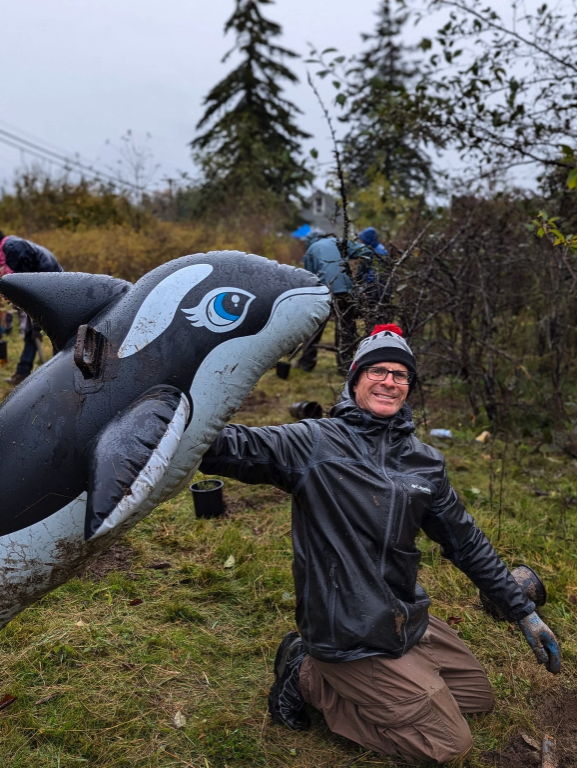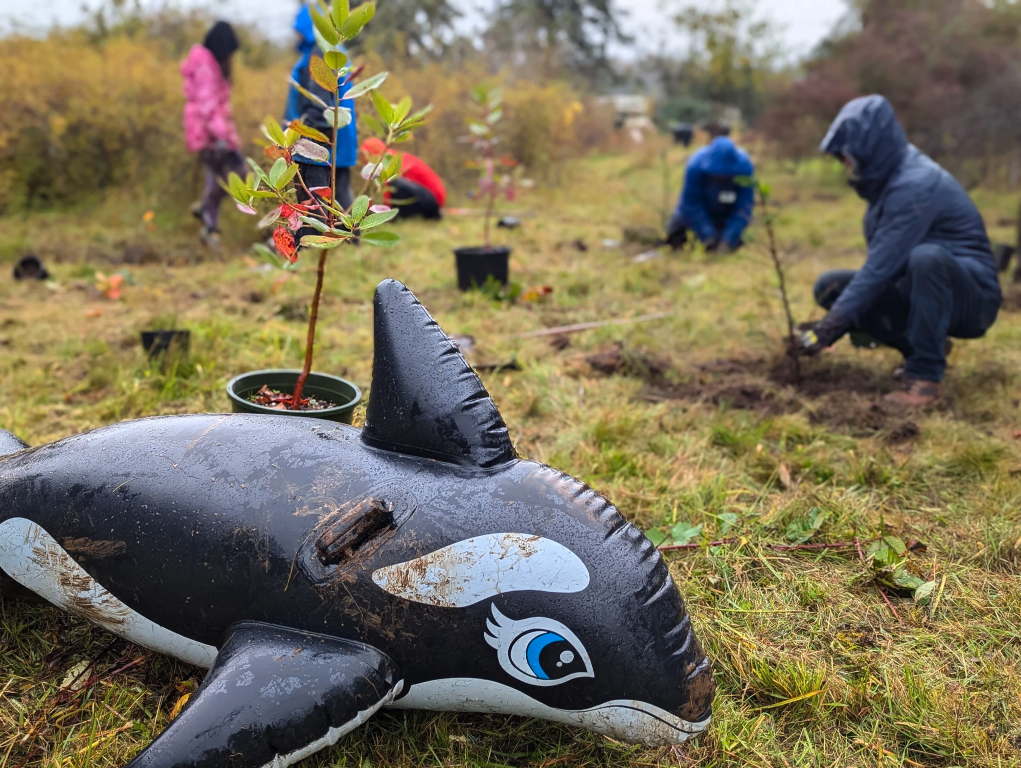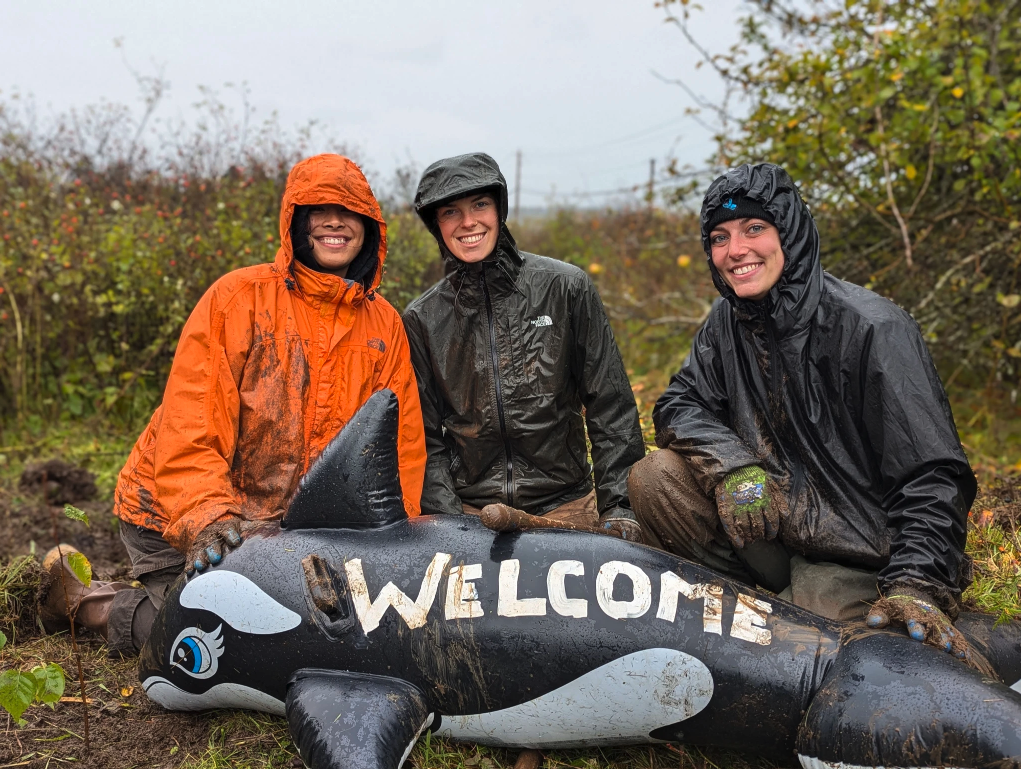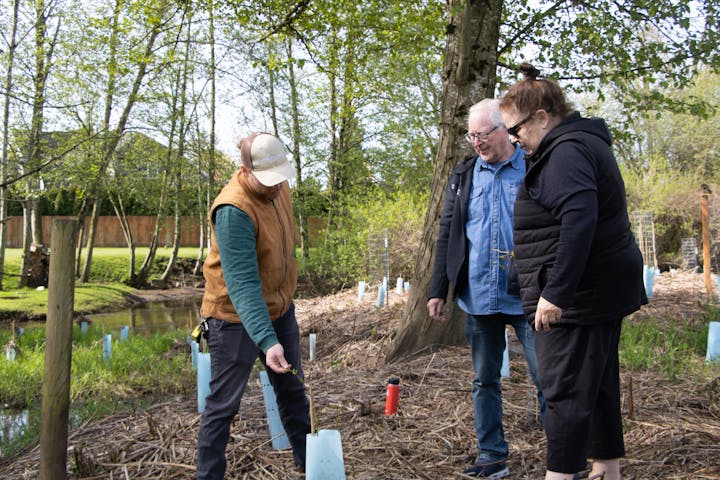Braving the Gale for the Whales -Orca Recovery Day 2024
Oct 30, 20242 min read
Braving the Gales for the Whales -Orca Recovery Day 2024
Updated: Oct 31, 2024
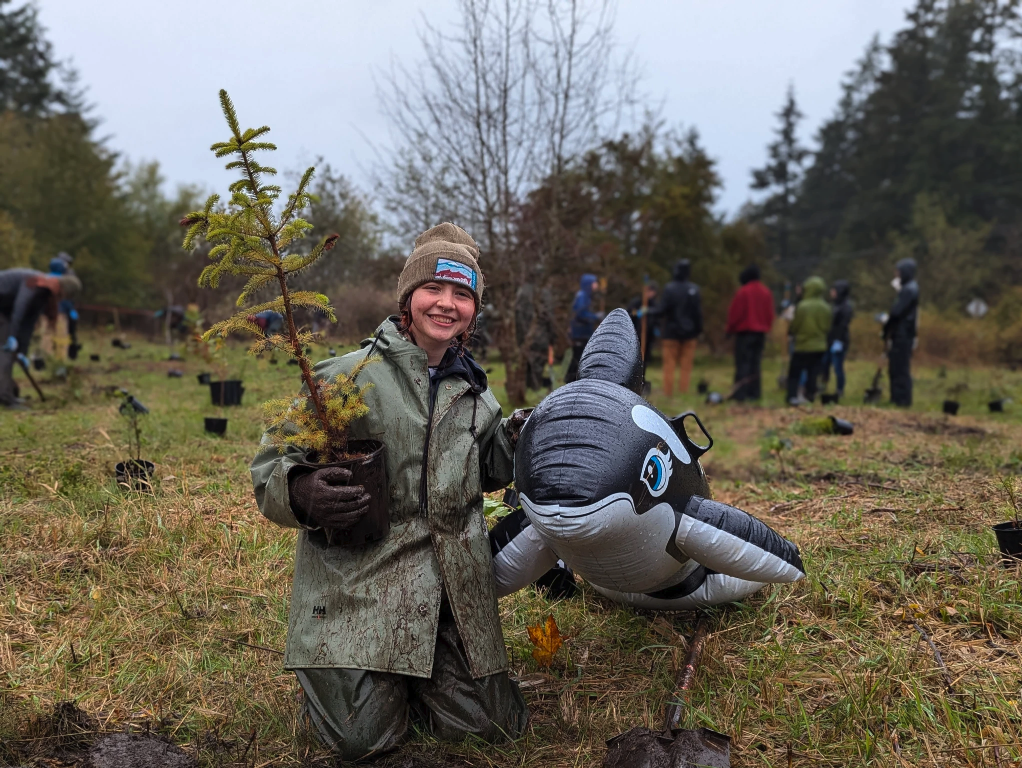
An atmospheric river did not deter the 50 volunteers who came to the 7th Annual Orca Recovery Day event in Whatcom County! Our crew of dedicated community members planted 750 native plants over the course of three hours on California Creek, in Blaine. Despite the two inches of rain and blustery weather, smiles were seen throughout the event!
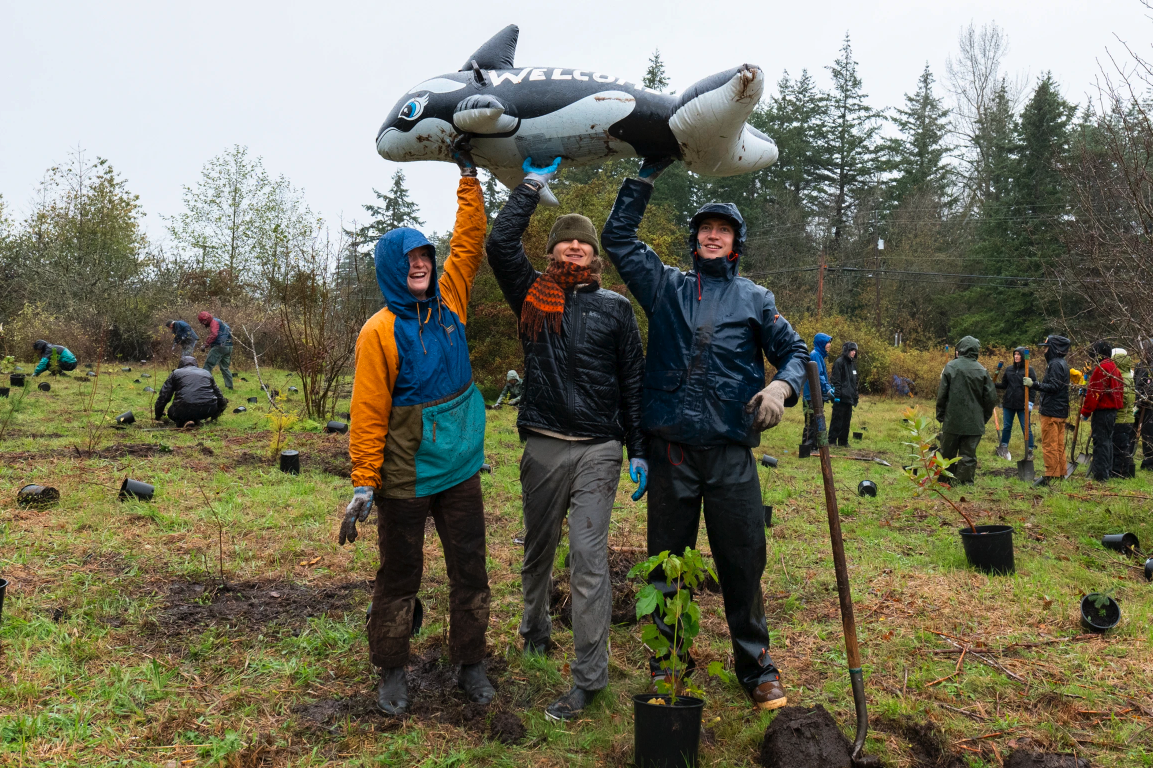
Orca Recovery Day is an intentional day of action to build awareness and make a difference for our local Southern Resident orcas. Over 40 events took place across Washington to restore riparian habitat, raise awareness, clean beaches, and more in support of our orcas. The Whatcom event is led by Whatcom Conservation District (Whatcom CD), Nooksack Salmon Enhancement Association (NSEA) and the Whatcom Land Trust. In this collaboration, Whatcom CD provides the planning, permitting, and funding for plants through the Riparian Grant Program, a program funded by the Climate Commitment Act. NSEA provides expertise, personnel, and supplies to get native plants into the ground. Whatcom Land Trust purchased the property to restore.
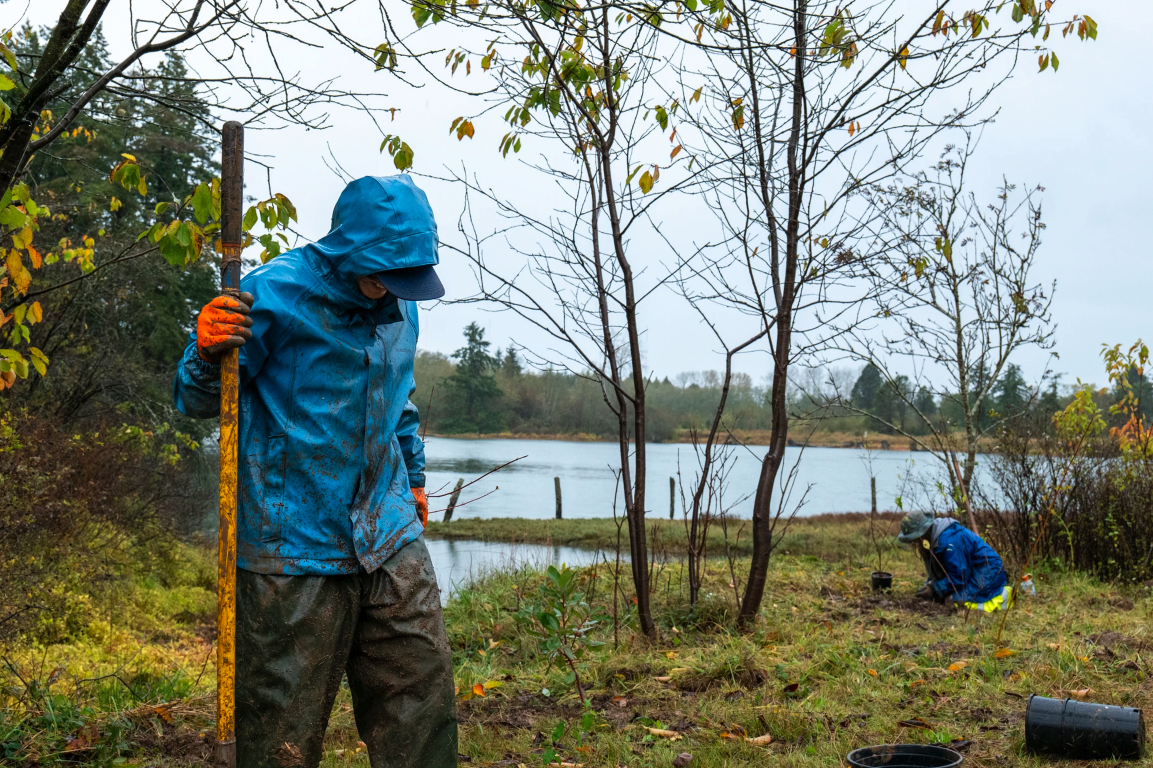
Several Orca Recovery Day Events have been hosted along California Creek on Whatcom Land Trust Land, including a site directly across from this year’s planting. While volunteers planted, they could see the forest reestablishing itself from efforts three years prior. Restoring habitat along California Creek helps orcas in two main ways: limiting pollution and protecting salmon habitat. California Creek is spawning ground for Chinook, chum, and coho salmon. Eighty percent of a Southern Resident orca’s diet is Chinook salmon, which is another endangered species. Planting native plants next to streams improves salmon habitat by providing sanctuaries from predators, by establishing habitat for the insects they eat, and by filtering pollutants before they enter the waterway. Pollution prevention not only aids in Chinook salmon recovery but also in Southern Resident Orca recovery.
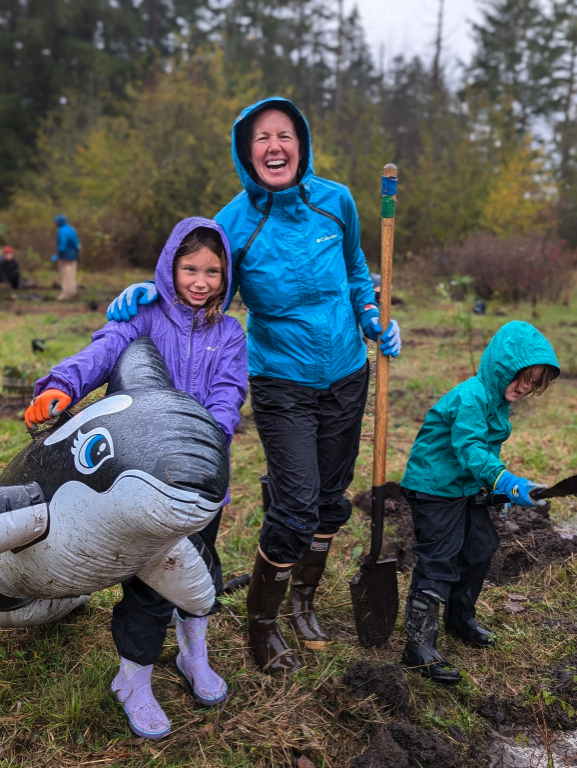
A Salish Sea without Southern Resident orcas is a bleaker place. There are actions we can take every day to continue supporting our orcas and leaving a legacy for the future. If you live on a stream, creek, or river, you may be able to restore salmon habitat in your own backyard. The Whatcom CD Riparian Grant Program provides planning and funding to restore salmon streams in Whatcom County. Even if you don’t live on a stream, planting native plants in your yard will help filter rainwater on your land before it enters larger streams and the Salish Sea. You can always help NSEA get more trees into the ground; check out NSEA’s Fall Work Party schedule to help salmon and help orcas!
Thank you to all the volunteers who participated in the 7th Annual Orca Recovery Day! Thank to Flax4Life, Tony’s Coffee and The Bagelry for donating food and refreshments for volunteers.



